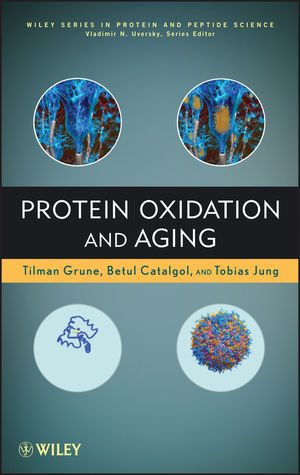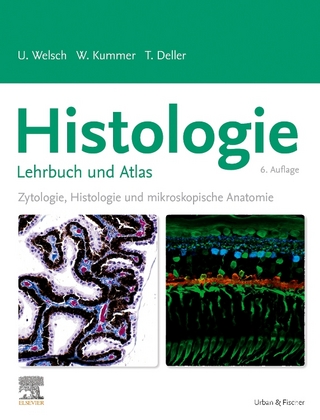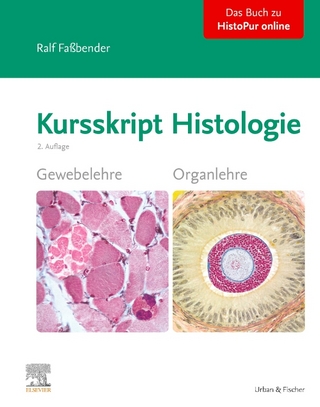
Protein Oxidation and Aging
John Wiley & Sons Inc (Verlag)
978-0-470-87828-6 (ISBN)
Reviews our current understanding of the role of protein oxidation in aging and age-related diseases
Protein oxidation is at the core of the aging process. Setting forth a variety of new methods and approaches, this book helps researchers conveniently by exploring the aging process and developing more effective therapies to prevent or treat age-related diseases. There have been many studies dedicated to the relationship between protein oxidation and age-related pathology; now it is possible for researchers and readers to learn new techniques as utilizing protein oxidation products as biomarkers for aging.
Protein Oxidation and Aging begins with a description of the tremendous variety of protein oxidation products. Furthermore, it covers:
Major aspects of the protein oxidation process
Cellular mechanisms for managing oxidized proteins
Role of protein oxidation in aging
Influence of genetic and environmental factors on protein oxidation
Measuring protein oxidation in the aging process
Protein oxidation in age-related diseases
References at the end of each chapter serve as a gateway to the growing body of original research studies and reviews in the field.
TILMAN GRUNE, MD, is Full Professor and Director of the Institute of Nutrition at Friedrich Schiller University Jena. His research examines the biological phenomenon of oxidative stress. In particular, his research group has been investigating the oxidative stress response of cells and organisms and the protective influence of antioxidants. BETUL CATALGOL, MD, is Assistant Professor in the Faculty of Medicine and the Department of Biochemistry at Marmara University. She is coauthor of Proteasome and Neurodegenerative Diseases, Proteasome and Cancer, and Protein Carbonyl Measurement by Enzyme-Linked Immunosorbent Assay. TOBIAS JUNG, PhD, is a Research Assistant at Friedrich Schiller University Jena. He is coauthor of Structure of the Proteasome.
Introduction to the Wiley Series on Protein and Peptide Science xi
Preface xiii
1 Oxidative Stress and Protein Oxidation 1
1.1 The Large Variety of Protein Oxidation Products, 7
1.1.1 Primary Protein Oxidation Products, 7
1.1.1.1 Carbon-Centered Radicals, 9
1.1.1.2 Thiyl Radicals, 13
1.1.1.3 Aromatic Ring-Derived Radicals, 13
1.1.1.4 Transfer between Sites, 16
1.1.2 Reactive Compounds Mediating in Protein Oxidation, 18
1.1.2.1 Hydroxyl Radical, 20
1.1.2.2 Superoxide Radicals, 21
1.1.2.3 Hydrogen Peroxide, 24
1.1.2.4 Lipid Peroxyl Radicals, 24
1.1.2.5 Alkoxyl Radicals, 24
1.1.2.6 •NO and Peroxynitrite, 25
1.1.2.7 Hypochlorous Acid, 30
1.1.3 Enzymatic Systems Playing a Role in Protein Oxidation, 31
1.1.3.1 NADPH Oxidase, 32
1.1.3.2 Lipoxygenases, 35
1.1.3.3 Protein Kinases, 35
1.1.3.4 Mixed-Function Oxidases, 36
1.1.3.5 Nitric Oxide Synthetase (NOS), 38
1.1.3.6 Myeloperoxidase, 41
1.1.3.7 Cyclooxygenase, 42
1.1.4 Protein Oxidation in Cells and Cellular Structures, 43
1.1.4.1 Protein Oxidation in Blood and Blood Cells, 43
1.1.4.2 Protein Oxidation of Glycolytic Enzymes and Mitochondria, 46
1.1.4.2.1 Glycolytic Enzymes, 48
1.1.4.2.2 Aconitase, 49
1.1.4.2.3 Carnitine Palmitoyltransferase-1, 49
1.1.4.3 Cytochrome P450 Enzymes, 49
1.1.4.4 Protein Oxidation in the Nucleus and Chromatin, 50
1.1.4.4.1 Histone Modifi cation, 50
1.1.4.5 Protein Oxidation in the Endoplasmic Reticulum, 52
1.1.4.6 Protein Oxidation in Peroxisomes, 54
1.2 Reversible Oxidative Modifi cations, 55
1.2.1 Methionine Sulfoxides and Methionine Modifi cations, 55
1.2.2 Cysteine Modifi cations and Disulfi de Bond Formation, 61
1.2.3 Surface Hydrophobicity Modifi cations, 64
1.3 Irreversible Oxidation Products, 64
1.3.1 Protein Oxidation and Enzymatic Posttranslational Modifications, 65
1.3.2 Deamidation and Transamination, 66
1.3.3 Protein Glycation and AGEs, 67
1.3.3.1 Receptor for Advanced Glycation End Products (RAGE), 75
1.3.3.2 Nε-Carboxymethyllysine and Nε-Carboxyethyllysine, 76
1.3.3.3 Pentosidine, 76
1.3.4 Racemization, 77
1.3.5 Nitrosylation, 77
1.3.6 Tyrosyl Radicals and Nitrotyrosines, 78
1.3.6.1 Dityrosines, 79
1.3.7 Protein Carbonyls, 80
1.3.8 Aldehyde–Protein Reactions, 81
1.3.8.1 MDA-Protein Adducts, 82
1.3.8.2 4-Hydroxy-2,3-Nonenal-Protein Adducts, 82
1.3.9 Cross-Linking of Proteins, 82
1.4 The Oxidation of Extracellular Matrix, Membrane and Cytoskeletal Proteins, 83
1.4.1 Collagen, 84
1.4.2 Elastin, 95
1.4.3 The Oxidation of Membrane Proteins, 97
1.4.4 Band 3, 97
1.4.5 Actin, 99
1.5 Mechanism and Factors Influencing the Formation of Protein Oxidation Products, 100
1.5.1 Redox Status, 101
1.5.2 Protein Turnover, 106
1.5.3 Metal-Catalyzed Oxidation (MCO), 107
1.5.4 Heat Shock Proteins, 109
1.6 Protein Aggregates: Formation and Specific Metabolic Effects, 111
1.6.1 Accumulation of Oxidized Proteins, 113
1.6.2 Lipofuscin and Ceroid, 115
1.7 Methods to Measure Protein Oxidation Products in Research Laboratories, 119
1.7.1 Determination of Methionine Sulfoxide Reduction and Methionine Oxidation, 120
1.7.2 Determination of Protein Glycation and Adducts, 121
1.7.3 Analysis of Isoaspartate Formation, 122
1.7.4 Measurement of Fragmentation, 122
1.7.5 Measurement of Tyrosine Oxidation, 123
1.7.6 Protein Carbonyl Measurement, 124
1.7.7 Radioactive Labeling Protocols for Proteolysis and Aggregation Measurements, 128
1.7.8 Standard Chromatographic Methods for the Measurement of Protein Modifi cations, 132
1.7.9 Liquid Chromatography Techniques Supported by Mass Spectrometry, 133
1.7.10 GC/MS, 134
1.7.11 Analysis of Protein-Bound 3-Nitrotyrosine by a Competitive ELISA Method, 134
1.7.12 Protein Oxidation Products as Biomarkers in Clinical Science, 135
References, 139
2 Removal of Oxidized Proteins 215
2.1 The Limited Repair of Some Oxidized Proteins, 216
2.1.1 Thiol Repair, 216
2.1.2 Methionine Sulfoxide Reductases, 219
2.2 Proteolysis, 221
2.2.1 The Proteasomal System and Its Role in the Degradation of Oxidized Proteins, 222
2.2.1.1 The Ubiquitin–Proteasome System (UPS), 222
2.2.1.2 The Components of the UPS, 222
2.2.1.2.1 The 20S Proteasome, 222
2.2.1.2.2 The Inducible Forms of the Proteasome and Their Function, 227
2.2.1.2.3 The 11S Regulator, 231
2.2.1.2.4 The 19S Regulator and the UPS, 233
2.2.1.2.5 The PA200 Regulator Protein, 238
2.2.1.2.6 Cellular Proteasome Inhibitors, 239
2.2.1.3 Low-Molecular-Weight Proteasome Inhibitors, 239
2.2.1.4 Cellular Function of the UPS, 241
2.2.1.5 The Degradation of Oxidized Proteins: A Function of the 20S Proteasome, 243
2.2.1.5.1 Early Studies on the Turnover of Oxidized Proteins, 244
2.2.1.5.2 In Vitro Studies and the Recognition of Oxidized Proteins by the Proteasome, 244
2.2.1.5.3 Cellular and In Vivo Studies of the Degradation of Oxidized Proteins, 248
2.2.1.5.4 The Inhibition of the Proteasome by Cross-Linked Oxidized Proteins and Proteasomal Regulation during Oxidative Stress, 251
2.3 The Role of Other Proteases in the Fate of Oxidized Proteins, 254
2.3.1 Lysosomal Degradation of Oxidized Proteins and the Role of Autophagy, 254
2.3.2 Mitochondrial Degradation of Oxidized Proteins and the Lon Protease, 256
2.3.3 The Uptake of Extracellular Oxidized Proteins and the Role of the Proteasome in Their Degradation, 258
2.3.4 Calpains and the Degradation of Oxidized Proteins, 259
2.4 Role of Heat Shock Proteins in Protein Degradation, 260
2.5 Conclusion, 262
References, 262
3 Protein Oxidation and Aging: Different Model Systems and Affecting Factors 295
3.1 Protein Oxidation during Aging: Lower Organisms and Cellular Model Systems, 297
3.1.1 Yeast, 297
3.1.1.1 Saccharomyces cerevisiae, 297
3.1.1.2 Schizosaccharomyces pombe, 301
3.1.2 Podospora anserina, 301
3.1.3 Bacteria, 302
3.1.3.1 Escherichia coli, 302
3.1.4 Cell Cultures, 304
3.2 Nonmammalian Model Systems and the Accumulation of Oxidized Proteins during Aging, 308
3.2.1 Caenorhabditis elegans, 308
3.2.2 Drosophila melanogaster, 310
3.2.3 Aquatic Systems, 313
3.2.4 Plants, 315
3.2.5 Amphibians, 317
3.3 Age-Related Protein Oxidation in Humans and Mammals, 317
3.3.1 Humans, 317
3.3.2 Animals, 319
3.3.2.1 Rabbits, 323
3.3.2.2 Mice, 324
3.3.2.3 Rats, 327
3.3.2.4 Gerbils, 329
3.3.2.5 Primates, 330
3.4 Inherited Factors Influencing Protein Oxidation during Aging, 331
3.4.1 Genetic Instability, Mutations, and Polymorphism, 331
3.4.2 Gender, 333
3.4.3 Vitagenes, 334
3.4.4 Signal Transduction and Transcription Factors, 335
3.4.5 Ion Channels, 340
3.5 Age-Related Protein Aggregate Formation in Model Systems, 341
3.6 Environmental Factors Affecting Healthy Aging, 342
3.6.1 UV-Induced Skin Photoaging and Skin Aging, 344
3.6.2 Pesticides, 348
3.6.3 Exercise, 349
3.6.4 Dietary Factors and Prevention Strategies, 351
3.6.4.1 Melatonin, 353
3.6.4.2 Growth Hormone, 354
3.6.4.3 Biotrace Metal Elements: Zinc, 356
3.6.4.4 Ascorbic Acid, 357
3.6.4.5 Vitamin E, 360
3.6.4.6 Carnitine and Acetyl-L-Carnitine, 361
3.6.4.7 Homocysteine, 362
3.6.4.8 Ubiquinone, Coenzyme Q10, 363
3.6.4.9 Carnosine, 363
3.6.4.10 Lipoic Acid, 364
3.6.4.11 N-Acetyl-L-Cysteine, 365
3.6.5 Pharmacological Response and Biotransformation in Aging, 365
3.6.5.1 Plant Extracts, 366
3.6.5.2 Polyphenols and Flavonoids, 366
3.6.5.3 Resveratrol, 367
3.6.5.4 AGE and ALE Inhibitors, 368
3.6.6 Caloric Restriction, 369
3.7 Repair and Degradation of Oxidized Proteins during Aging, 370
References, 372
4 Protein Oxidation in Some Age-Related Diseases 417
4.1 Protein Oxidation during Neurodegeneration and Neurological Diseases, 417
4.1.1 Brain Aging, 418
4.1.2 Alzheimer’s Disease, 420
4.1.3 Parkinson’s Disease, 424
4.1.4 Huntington’s Disease, 425
4.1.5 Stroke, 427
4.1.6 Amyotrophic Lateral Sclerosis, 427
4.2 Protein Oxidation in Cardiac Diseases, 429
4.2.1 Ischemia–Reperfusion, 429
4.2.2 Atherosclerosis, 430
4.3 Protein Oxidation in Diabetes, 431
4.4 Protein Oxidation in Degenerative Arthritis, 434
4.5 Protein Oxidation in Muscle Wasting and Sarcopenia, 435
4.6 Protein Oxidation in Destructive Eye Diseases, 437
4.6.1 Age-Related Macular Degeneration, 437
4.6.2 Cataract, 438
4.7 Protein Oxidation in Osteoporosis, 440
4.8 Protein Oxidation in Cancer, 441
4.8.1 Proteasome Inhibitors in Cancer Therapy, 444
4.9 Other Diseases, 446
4.9.1 Premature Aging Diseases Progeria and Werner’s Syndrome, 446
4.9.2 Renal Failure and Hemodialysis in Elderly People, 447
4.9.3 Obesity, 447
4.9.4 Idiopathic Pulmonary Fibrosis, 448
4.9.5 Presbycusis (Age-Related Hear Loss), 448
References, 448
List of Abbreviations 479
Index 493
| Erscheint lt. Verlag | 1.2.2013 |
|---|---|
| Reihe/Serie | Wiley Series in Protein and Peptide Science |
| Verlagsort | New York |
| Sprache | englisch |
| Maße | 163 x 241 mm |
| Gewicht | 880 g |
| Themenwelt | Medizin / Pharmazie ► Medizinische Fachgebiete |
| Studium ► 1. Studienabschnitt (Vorklinik) ► Histologie / Embryologie | |
| Naturwissenschaften ► Biologie ► Biochemie | |
| Naturwissenschaften ► Biologie ► Genetik / Molekularbiologie | |
| Naturwissenschaften ► Chemie ► Organische Chemie | |
| ISBN-10 | 0-470-87828-2 / 0470878282 |
| ISBN-13 | 978-0-470-87828-6 / 9780470878286 |
| Zustand | Neuware |
| Haben Sie eine Frage zum Produkt? |
aus dem Bereich


